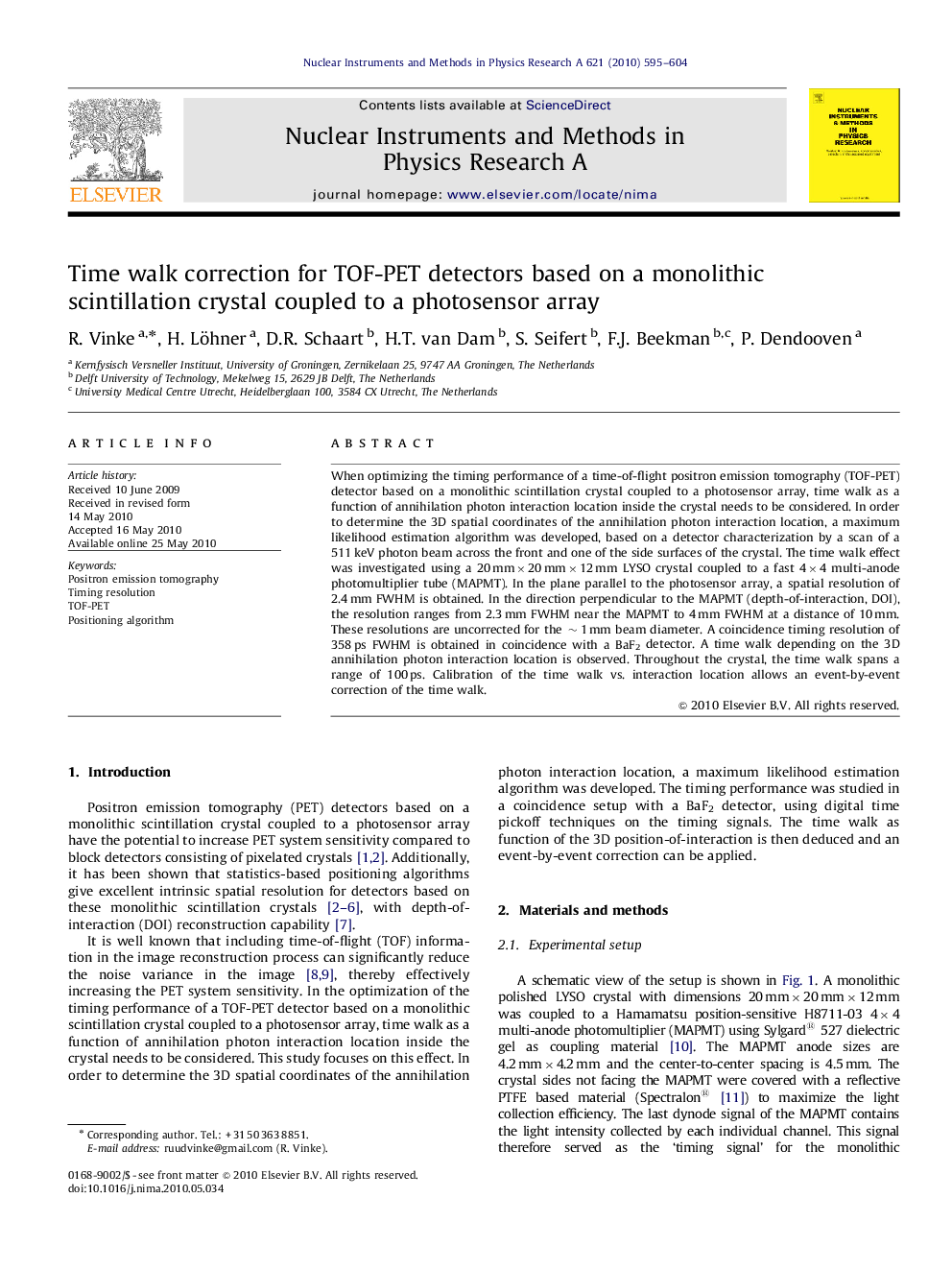| Article ID | Journal | Published Year | Pages | File Type |
|---|---|---|---|---|
| 1825875 | Nuclear Instruments and Methods in Physics Research Section A: Accelerators, Spectrometers, Detectors and Associated Equipment | 2010 | 10 Pages |
When optimizing the timing performance of a time-of-flight positron emission tomography (TOF-PET) detector based on a monolithic scintillation crystal coupled to a photosensor array, time walk as a function of annihilation photon interaction location inside the crystal needs to be considered. In order to determine the 3D spatial coordinates of the annihilation photon interaction location, a maximum likelihood estimation algorithm was developed, based on a detector characterization by a scan of a 511 keV photon beam across the front and one of the side surfaces of the crystal. The time walk effect was investigated using a 20 mm×20 mm×12 mm LYSO crystal coupled to a fast 4×4 multi-anode photomultiplier tube (MAPMT). In the plane parallel to the photosensor array, a spatial resolution of 2.4 mm FWHM is obtained. In the direction perpendicular to the MAPMT (depth-of-interaction, DOI), the resolution ranges from 2.3 mm FWHM near the MAPMT to 4 mm FWHM at a distance of 10 mm. These resolutions are uncorrected for the ∼1mm beam diameter. A coincidence timing resolution of 358 ps FWHM is obtained in coincidence with a BaF2 detector. A time walk depending on the 3D annihilation photon interaction location is observed. Throughout the crystal, the time walk spans a range of 100 ps. Calibration of the time walk vs. interaction location allows an event-by-event correction of the time walk.
